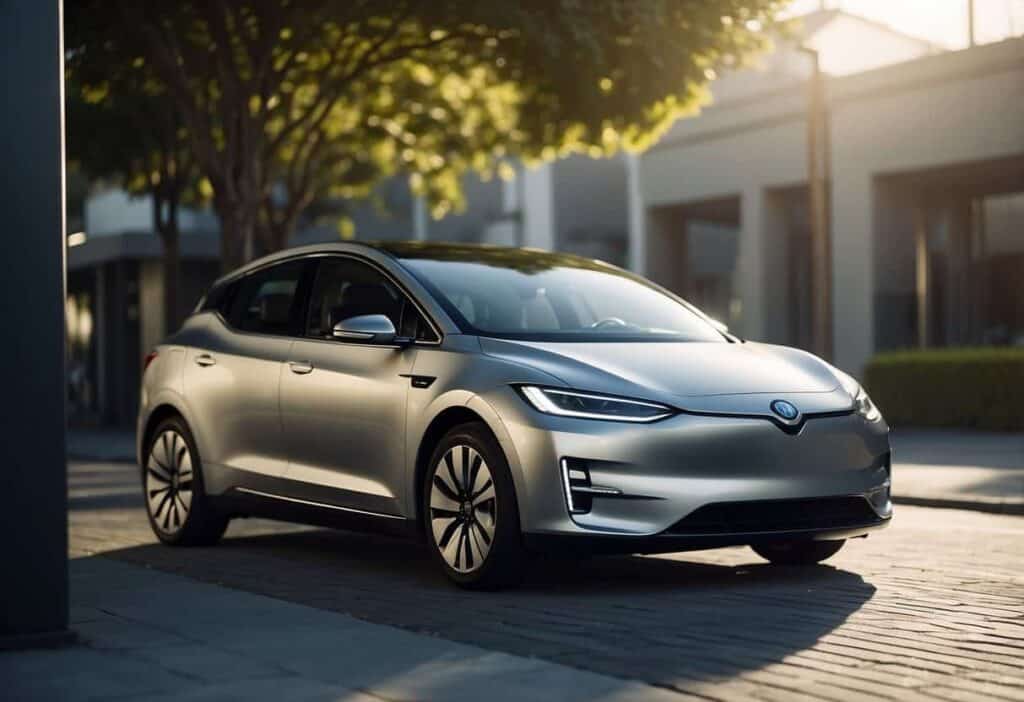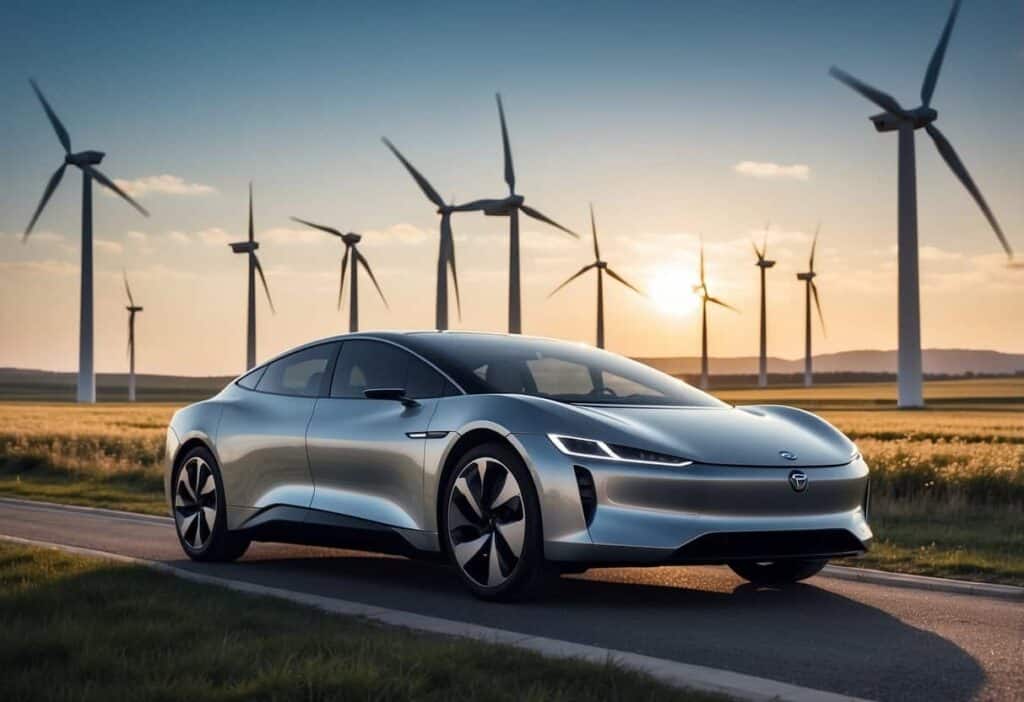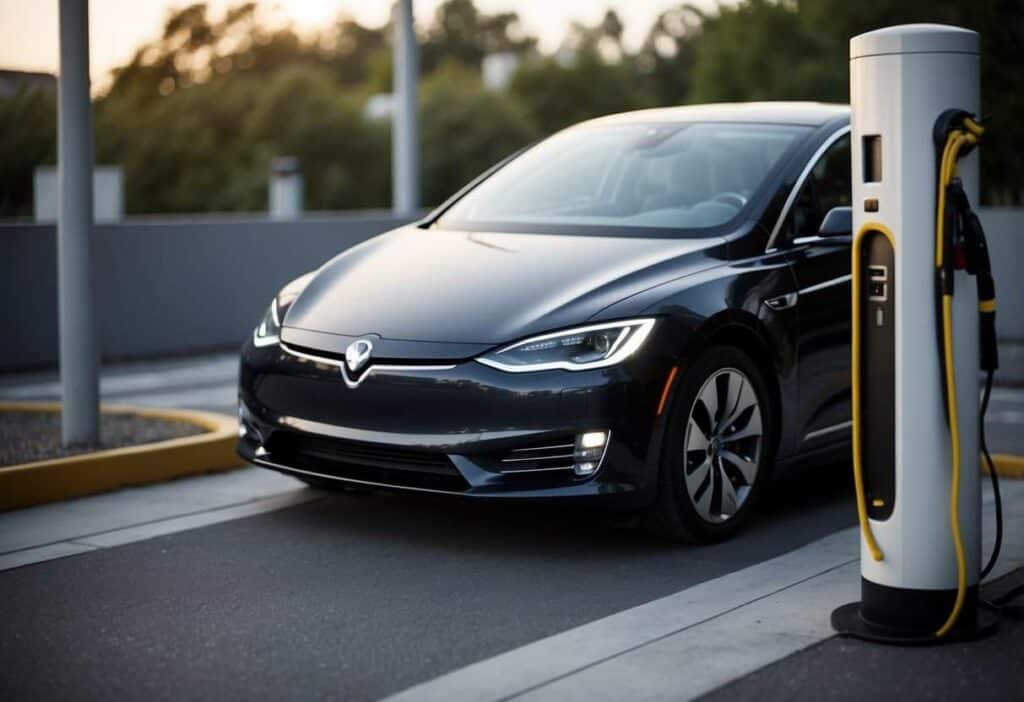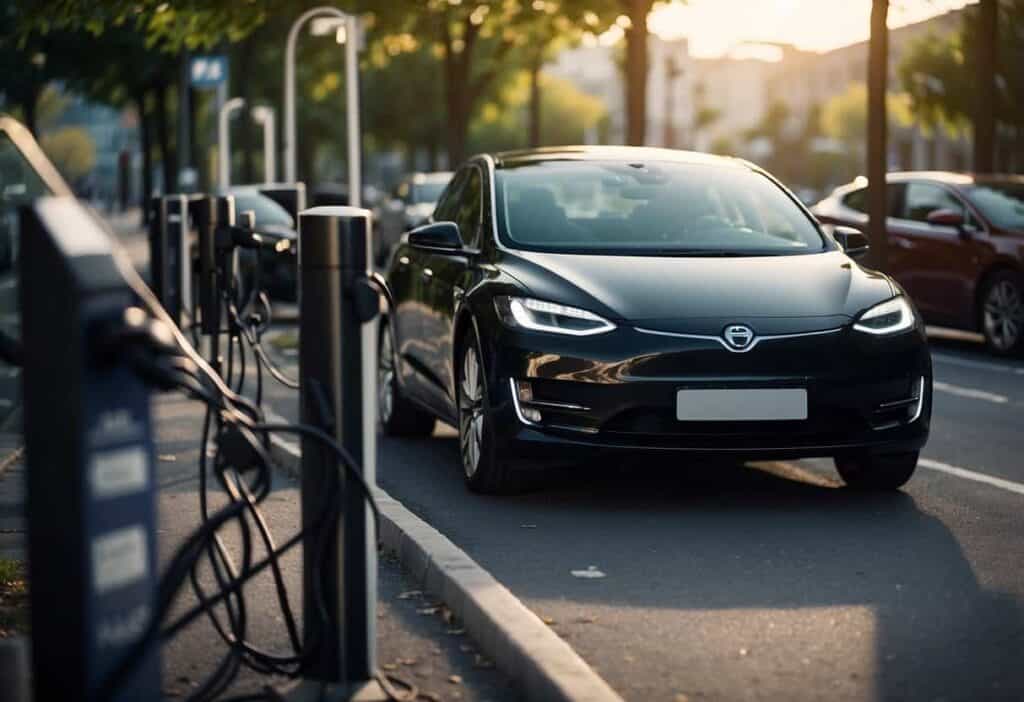Electric cars, also known as EVs, transform the automotive industry by offering a sustainable alternative to traditional gasoline-powered vehicles. An electric car is propelled by one or more electric motors using energy stored in batteries, making it quieter and more efficient than its internal combustion engine counterparts. This shift towards electric mobility is driven by the need to reduce emissions and promote cleaner transportation.
The main components of an electric vehicle include the battery, the electric motor, and the power control unit. The battery stores energy from the electrical grid, which is then used to power the electric motor. The electric motor generates the necessary force to move the car’s wheels. Unlike traditional cars, EVs do not have exhaust systems, producing zero direct emissions, significantly benefiting the environment.
With increasing technological advancements, modern electric cars offer impressive ranges on a single charge, making them practical options for daily commuting and long-distance travel. As the charging infrastructure continues to expand, recharging EVs is becoming easier and more convenient, further encouraging their adoption.
What is an Electric Vehicles?
Electric vehicles (EVs) use modern technology to reduce reliance on fossil fuels, minimize tailpipe emissions, and contribute positively to efforts against climate change. They come in various types, each offering unique benefits and fitting different transportation needs.

History and Evolution of Electric Cars
Electric vehicles have a rich history dating back to the 19th century. The first successful EV was built in the 1830s.
Electric cars were highly popular in the early 20th century. However, their use declined due to advancements in internal combustion engines and the discovery of large gasoline reserves.
Today, EVs are experiencing a resurgence with advancements in battery technology and a growing emphasis on renewable energy.
Comparing EVs with Internal Combustion Engine Vehicles
Electric vehicles differ significantly from internal combustion engine (ICE) vehicles. Unlike ICE vehicles that burn gasoline, EVs rely on electricity stored in batteries.
EVs do not produce tailpipe emissions, making them environmentally friendly. They are also quieter and can have lower maintenance costs because they have fewer moving parts.
Environmental Impact
Electric vehicles offer numerous environmental benefits. They help reduce greenhouse gas emissions, which contribute to climate change.
By not emitting tailpipe pollutants, EVs improve air quality. When charged with renewable energy sources, their carbon footprint is further reduced. This makes them an essential part of efforts to combat climate change and reduce dependence on fossil fuels.
Types of Electric Vehicles
There are several types of electric vehicles, each with specific attributes:
- Battery Electric Vehicles (BEVs): Run entirely on electricity stored in batteries.
- Plug-in Hybrid Electric Vehicles (PHEVs): Combine a gasoline engine with an electric motor and can be plugged in to recharge.
- Hybrid Electric Vehicles (HEVs): Use a gasoline engine and an electric motor but cannot be plugged in to recharge.
- Fuel Cell Electric Vehicles (FCEVs): Generate electricity using a hydrogen fuel cell.
Market Trends and Industry Players
The electric vehicle market is growing rapidly. Companies like Tesla and Audi lead the charge with innovative models and technologies.
The U.S. Department of Energy supports EV adoption through various initiatives. Increased consumer interest and government incentives are driving market expansion.
These trends reflect a shift towards greener transportation options and sustainability in the automotive industry.

Check out Top 10 Electric Car Companies
How Electric Cars Work
Electric cars use stored electrical energy to power electric motors, propelling the vehicle forward. They differ from traditional vehicles by having fewer moving parts and no exhaust emissions.
Basic Principles of Electric Vehicles
Electric vehicles (EVs) use electric motors instead of internal combustion engines. These motors operate by converting electrical energy into mechanical energy through electromagnetism. The energy comes from battery packs, which store power in chemical form and release it when needed.
An onboard inverter converts direct current (DC) from the batteries to alternating current (AC). This AC powers the electric traction motor, creating motion. EVs have fewer moving parts, making them efficient and reducing maintenance needs.
Also, read why electric cars are bad for the environment.
Main Components and Their Functions
- Battery Packs: These store electrical energy and are the primary power source.
- Electric Traction Motor: Converts electrical energy into mechanical motion.
- Inverter: Converts DC from batteries to AC for the motor.
- Powertrain: Includes the drivetrain and electric motor, delivering power to the wheels.
- Regenerative Braking System: Captures kinetic energy during braking and converts it back to electrical energy, recharging the batteries.
Components like the drivetrain and inverter ensure efficient energy transfer from the batteries to the wheels, enhancing performance and range.
Energy Transfer in Electric Cars
Energy transfer in an electric car involves converting stored electrical energy into mechanical energy to move the vehicle. The process starts when the battery packs release direct current (DC). The inverter then converts this DC into alternating current (AC) to power the electric motors.
As the motor runs, it generates torque, which is transferred to the wheels through the drivetrain. During braking, regenerative braking captures some of the energy, sending it back to the batteries, boosting efficiency and range.
Electric Car Performance Metrics
Electric car performance is measured by several key metrics:
- Range: Distance the vehicle can travel on a single charge.
- Efficiency: Energy consumption rate, often measured in miles per kilowatt-hour (kWh).
- Acceleration: Time it takes to go from 0 to 60 mph, highlighting the motor’s power.
- Capacity: Total energy storage of the battery packs, influencing range and power delivery.
- Energy Density: Amount of energy stored per unit of battery volume or weight.
These metrics help consumers understand how effectively electric cars use energy and what to expect in terms of performance and travel capabilities.

Check out Why Do Electric Cars Not Have Gears?
Electric Vehicles Power Systems
Electric vehicles (EVs) use advanced energy storage, charging, and conversion technologies. These systems work together to ensure efficient and reliable performance.
Batteries and Energy Storage
EVs primarily use lithium-ion batteries due to their high energy density and long cycle life. These batteries store energy in kilowatt-hours (kWh), which dictates how far a car can travel on a single charge.
Voltage and capacity are important factors in battery performance. High voltage can increase the power output, while greater capacity allows for longer driving ranges.
Some EVs also employ lead-acid batteries for auxiliary functions like starting the electric motor. The inclusion of power electronics such as DC-DC converters helps manage the voltage levels to ensure stable power supply to various vehicle systems.
Charging Technologies and Infrastructure
EVs must be plugged into a charging station or outlet to recharge their batteries. Charging power is measured in kilowatts (kW) and affects how quickly a battery can be recharged.
Level 2 charging offers a significant upgrade in charging speed compared to regular household outlets, typically providing up to 30 miles of range per hour of charging. Public charging stations, which often feature Level 2 charging or even faster options, are part of the growing charging infrastructure that supports EV deployment.
Advanced charging options like fast chargers can replenish a battery to 80% capacity in under 30 minutes, making long-distance travel more feasible.
Motors and Drive Technology
EVs use electric motors to convert electrical energy into mechanical motion. Common types include the AC induction motor and the DC motor.
In an AC induction motor, electrical current creates an electromagnetic field in the stator, which induces a current in the rotor, causing it to spin. This type of motor is popular due to its durability and efficiency.
A DC motor can use brushes and a commutator to reverse the direction of current in the motor windings, allowing the motor to turn. Induction motors tend to be more efficient and require less maintenance compared to brushed DC motors.
Power Conversion
Power conversion is crucial for managing the electrical energy in EVs. An inverter converts the battery’s DC power to the AC power needed by the motor.
Power electronics also play a vital role in regulating the electromagnetic fields within the motor to control its speed and torque. This results in smoother acceleration and better power management.
The DC-DC converter is another key component, stepping down the high-voltage DC from the battery to a lower voltage suitable for the vehicle’s auxiliary systems. This ensures that all electrical components receive the correct voltage needed for optimal operation.
Check out Why Do Electric Cars Produce More Torque?
Daily Use and Maintenance
Electric cars require different daily habits and maintenance routines compared to traditional gas-powered vehicles. Key aspects include charging practices, brake care, and routine checks on various components.

Operating Electric Cars Day-to-Day
Electric cars need regular charging, and most drivers charge at home using a standard outlet or a dedicated charging station. For daily use, automakers suggest charging to around 85-90% instead of 100% to prolong battery life. Public charging stations are also available for longer trips.
Heat management is crucial. Since electric motors produce less waste heat than gas engines, some models use heat pumps to manage cabin temperature efficiently. Brake systems use regenerative braking, which means they wear out slower, reducing the need for frequent replacements.
Checking tire pressure and windshield washer fluid are regular tasks. Unlike gas cars, EVs don’t require oil changes. Battery technology constantly improves, offering better reliability and lifespan.
Maintenance and Service Requirements
Electric vehicles’ regular maintenance is simpler in many aspects. They lack complex engines with many moving parts, reducing the number of potential mechanical issues. Key components like wheels and brakes still need attention, but often less frequently.
Manufacturers provide specific maintenance schedules. For example, Chevy recommends brake fluid replacement every 150,000 miles for the Bolt, while Tesla suggests a brake fluid check every four years for the Model 3.
Routine tasks include checking and rotating tires every 7,500 to 10,000 miles. Filters, lights, and other minor parts require occasional inspection and replacement. Regular software updates can also optimize performance and fix potential issues, enhancing reliability and extending the vehicle’s lifespan.
Future Developments and Innovations
Electric cars are set to transform with new advancements in battery and charging technology, emerging EV technologies, and their role in sustainable transport.
Advancements in Battery and Charging Tech
Battery technology is critical to the success of electric vehicles (EVs). One key development area is lithium-ion batteries, which are becoming more efficient and affordable. Innovations focus on increasing energy capacity and reducing charging times.
Researchers are also working on solid-state batteries, which promise higher energy density and increased safety. Enhanced charging technology like ultra-fast chargers and wireless charging stations are emerging, making battery electric vehicles (BEVs) more convenient.
Moreover, advancements in battery management systems improve the driving experience by optimizing motor control and extending battery life.
Emerging EV Technologies
Several new technologies are being integrated into EVs to enhance their functionality. Autonomous driving is one such technology which relies heavily on advanced sensors and AI. This technology can potentially reduce traffic congestion and increase road safety.
Other emerging technologies include over-the-air updates for motor controllers and integrated renewable energy systems. These innovations ensure that EVs are more efficient and continuously updated for better performance.
Vehicle-to-grid technology is another breakthrough. It allows EVs to return electricity to the grid, helping to balance energy loads and promoting the use of renewable energy.
The Role of Electric Cars in Sustainable Transport
Electric cars play a crucial role in the fight against climate change. By reducing carbon emissions, they contribute significantly to a more sustainable future. As the automotive industry shifts to EVs, this transition supports global goals for reducing greenhouse gases.
Electric cars, when powered by renewable energy sources, offer a truly sustainable mode of transportation. They help reduce carbon emissions and promote the use of cleaner technologies in the transport sector.
Furthermore, adopting EVs aligns with global sustainability goals, providing a path towards a cleaner and greener future.

Conclusion
Electric cars are transforming the automotive landscape. They offer a clean, efficient alternative to traditional internal combustion engine vehicles. Electric vehicles (EVs) operate using electric motors powered by energy stored in rechargeable batteries.
Key components:
- Battery: Stores energy from the electrical grid.
- Electric Motor: Converts energy into motion.
- Control System: Manages power distribution and motor functions.
Advantages of electric cars:
- Zero tailpipe emissions: Reduces air pollution.
- Less maintenance: Fewer moving parts than traditional engines.
- Lower fuel costs: Electricity is generally cheaper than gasoline.
Challenges:
- Limited range: Most EVs need frequent charging on long trips.
- Long charging times: Charging takes longer than refueling with gas.
- Initial cost: Higher upfront cost compared to gasoline cars.
Electric vehicles are becoming more common, supported by advances in battery technology and increasing availability of charging infrastructure. They represent a crucial step toward a more sustainable and environmentally friendly future.
As more people turn to electric cars, we can expect continuing improvements in their technology and accessibility. This shift promises a cleaner, more efficient mode of transportation for everyone.
You may also like:

Hi, I’m Marybeth, an electric car enthusiast living in New York in the USA. As the owner of electriccartalks.com, I love sharing my knowledge on EV tips, battery maintenance, and charging solutions. As a proud Tesla owner, I blend my personal experiences with professional insights to offer valuable information to fellow EV enthusiasts. Through my articles, I aim to empower others to make informed decisions about their electric vehicles. Read more